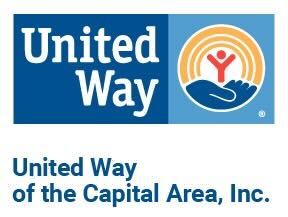When the COVID-19 pandemic hit, 50% of Mississippi households were already unable to afford household basics, never having recovered from the Great Recession, according to the ALICE Report released today by the Mississippi United Ways Association, in partnership with United For ALICE and with support from the W.K. Kellogg Foundation.
ALICE® – Asset Limited, Income Constrained, Employed: A Financial Hardship Study reveals the Federal Poverty Level (FPL) to be inaccurate and inadequate in measuring financial hardship. It places a spotlight on the growing ranks of hardworking residents who work at low-paying jobs, have little or no savings and were one emergency away from falling into poverty at the outset of the COVID-19 pandemic. The Report uses the latest data from a variety of sources, including the U.S. Census, to quantify how many households in Mississippi are struggling financially, and why.
In addition to the 210,761 Mississippi households in poverty in 2019, another 340,913 families were ALICE — earning more than the official U.S. poverty level, but less than what it costs to survive. Combined, these struggling households fall below the ALICE Threshold, the average income needed to survive in today’s economy. They grew to account for 50% of Mississippi’s 1.1 million households in 2019, up from 39% in 2007.
“We’ve known that our economy was becoming increasingly reliant on these families we call ALICE, who are financially vulnerable to one emergency. COVID-19 became that one universal emergency,” said United Way of the Capital Area President and CEO Dr. Ira Murray. “ALICE was the nursing home worker, grocery store clerk, delivery driver and child care worker who showed up to work during the pandemic despite enormous risk to their personal health, yet they are also the workers who don’t have health insurance, have no paid sick days and aren’t always sure they have enough food to feed their families.”
ALICE workers were locked out of the post-Recession economic boom due to stagnant wages and the rising cost of six essentials — housing, child care, food, transportation, health care and a basic smartphone plan — outpacing inflation. Their inability to establish savings due to meager pay raises and inconsistent job hours, schedules and benefits left them especially vulnerable to the dual economic and health crises of the pandemic.
The ALICE Report for Mississippi reveals:
- ALICE includes people of all ages, genders, races and ethnicities, living in rural, urban and suburban communities, mirroring the state’s basic demographic make-up. However, some groups are disproportionately represented in hardship due to longstanding discrimination and systemic racism, sexism and ageism. In 2019, 66% of Black households and 53% of Hispanic households in Mississippi fell below the ALICE Threshold vs. 40% of White households. In addition, 54% of senior households, 83% of single-female-headed families, and 48% of those headed by someone age 25 to 44 years old could not afford the basics.
- The basic cost of living in Mississippi is well above the FPL, ranging from $21,924 for a single adult, to $24,672 for a single senior, to $55,980 for a family of four with an infant and a preschooler. Meanwhile, the occupation projected to have the largest number of new jobs in Mississippi — cashier— earns a median wage of $9.21 per hour, which is not enough to support any of these budgets.
- Jobs paying less than $20 per hour account for 68% of all jobs in Mississippi.
- Low-wage jobs, or jobs that cannot support the family Household Survival Budget with two earners, grew by 75% between 2007 and 2019. Meanwhile, the number of high-wage jobs, or jobs that support the family Household Survival Budget with one earner, decreased by 29% during the same period.
- The cost of household basics, including housing, child care, food, transportation, health care and a smartphone plan, rose at an average rate of 3.4% annually nationwide over the past decade. That’s in contrast with an annual rate of inflation of 1.8%.
- Households one income bracket above the ALICE Threshold fell into financial hardship following the Recession, growing the ranks of ALICE households. If the same were to happen post-pandemic, the nearly 66,000 Mississippi households just above the Threshold could become ALICE, bringing the number of struggling households up from 50% to 56%.
“This report provides objective data that can inform the state’s pandemic recovery, taking into consideration the lessons learned following the Recession,” said the report’s lead researcher, United For ALICE Director Dr. Stephanie Hoopes. “Through no fault of their own, ALICE families were priced out of economic stability, setting the stage for the unprecedented economic impact of the pandemic.”
The ALICE Report for Mississippi was supported in part by the W.K. Kellogg Foundation and is a project of United For ALICE, a grassroots movement of some 675 United Ways, corporations, nonprofits and foundations in 24 states, all using the same methodology to document financial need.
“This ALICE Report provides a comprehensive picture of need in our state and comes at a critical time, as COVID-19 has exposed and exacerbated inequities for families who are unable to make ends meet,” said Dr. Rhea Williams-Bishop of the W.K. Kellogg Foundation. “The report provides data and resources to equip policymakers and service organizations to better support our children and families. This includes ensuring that dollars from the American Rescue Plan are equitably distributed and reach the families and communities that need them most.”
For more information or to find data about ALICE in local communities, visit UnitedForALICE.org/Mississippi.
